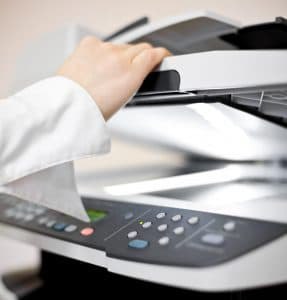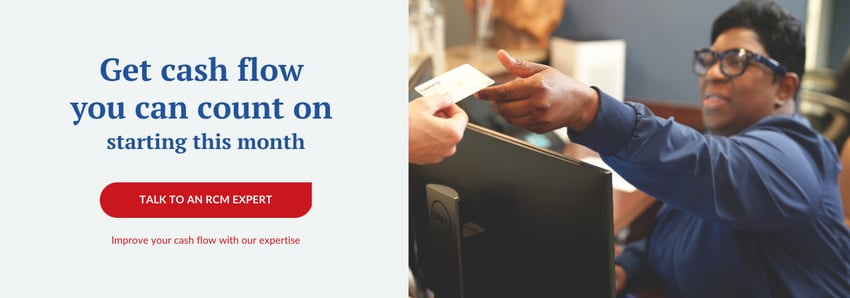Scanning Dental Explanation of Benefits Into Patient Charts – Is this the best record keeping practice?


So, what exactly is an explanation of benefits and why are they important?
What is an Explanation of Benefits (EOB)?
An EOB is an insurance document provided to the beneficiary (patient) and is also attached to the payment received by the practice. The EOB explains the benefits paid in detail by procedure. It also explains why and how the benefit is determined. This is crucial information for appeals of denied benefits, in an audit situation, even an in-house audit to determine if a payment posting error has occurred.
Without question, these are important documents. You do need to save them and not just for legal reasons, but also in case you need to reference them in the future. All offices have patients that call and dispute an invoice or ask why a certain procedure wasn’t covered. It’s important for the office to provide this information, accurately.
What’s equally important however, is for your office to have an efficient process for saving these documents that doesn’t involve scanning individually into each patient’s dental chart. There are problems with the method of individual EOB scanning and also solutions to consider.
Problems with scanning dental EOBs into patient charts
Many dental offices are scanning hard copy EOBs into patient charts for easy accessibility and reference. This is a bad practice for many reasons.
Scanning EOBs into patient charts can present possible HIPAA Violations
Most payers process claims and send reimbursement by way of a bulk payment. Bulk payment means that more than one patient’s insurance payment is in the check or other form of payment (i.e., EFT, virtual credit card) and multiple patient’s information is on the same EOB. It is inappropriate to scan one patients’ information into another’s chart in your dental software. This can be a violation of HIPAA because it puts the practice at risk for a privacy breach. Once the patient record is shared and it contains other patients’ PHI, such as found on a bulk EOB, a breach has just occurred.
Scanning individually into patient charts is an inefficient process
Scanning EOBs into each individual patient’s chart is a drain on your business team member’s time and is inefficient. Your business team should be performing insurance verification, making sure all data entry is correct, and patients are getting the attention needed. Having an EOB in the patient’s chart is not something needed to run your business. There are other more efficient ways to access the same information.
Payer websites provide dental EOBs for providers
Most EOBs are accessible through the insurance company’s website via a unique login assigned for each dental practice. But, there can be a time limit to retrieve historical EOBs so it is not a good practice to rely on this method. This can be true especially when you are no longer in-network with a payer as you may lose access to some information via the payer website. Insurance payers expect the patient and the practice to maintain copies of EOBs for their records.
Saving your dental EOBs – the best process
Scan paper copies of EOBs and save as one electronic file. Once posting of all payments is complete for the day, scan EOBs ONCE in alphabetical order by insurance company (i.e., Aetna, Blue Cross, Delta, etc.). Organize each saved file by date so it’s easy to look up for future reference. With this system in place, it only takes seconds to access an EOB for any reason. For example, if you are reviewing the patient’s ledger and need to access an EOB, you know the exact file to access and where it will be in the file because it’s dated according to the date the payment was posted and in alphabetical order. Certain software programs, such as Searchable PDF, can be upgraded to allow you to search patient names to find the EOB even faster.
You won’t be in violation of HIPAA, you only have to do one bulk scan, and the information is efficiently organized. Once scanned and saved, shred the hard copy EOBs.
Collecting Accurate Patient Payment Reduces Need to Access EOBs
One thing to remember is you should not be routinely accessing EOBs when accurate, detailed notes are entered in the financial records when posting payments. Detailed insurance verification ensures the correct patient amount can be collected at the time of service. When the insurance pays as estimated, and the correct patient portion is collected at the time of service, the patient account has a $0 balance. When a procedure denies or is paid less than anticipated, enter a note on the account about why. Your dental office is busy, and there is so much to do. Time is money, and time is wasted scanning EOBs into patient charts. Try out our alternative suggestions and let us know how it worked for you.
How long must I keep dental insurance EOBs?
A dental insurance Explanation of Benefits (EOB) or ERA is part of the patient’s financial record therefore, an EOB must be maintained.
Determine your record keeping requirements. State recording keeping laws require dental records be kept for a specified number of years. Contact your state dental board or state dental association to inquire as to your current state law. Additionally, a PPO provider should refer to your contract and processing policy manual as many include record keeping requirements. The more stringent rule applies to record retention.
Develop a simple system of storing EOBs that works for you. Consider what you have learned from reading this article and write your standard operating procedure, train your team and document your training.
Related Posts
Dental revenue resources from Dental Claim Support
.png)

